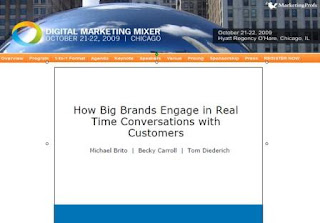
In honor of the
Carpet and Rug Institute Blog reaching the six-month mark, I thought I would share with you a case study documenting what it has achieved in those 6 months.
Situation:The
Carpet and Rug Institute (CRI) is a nonprofit trade association representing the manufacturers of more than 95 percent of all carpet made in the United States, their suppliers and their service providers with the goal to
"help increase consumers’ satisfaction with carpet and to show them how carpet creates a better environment."What is particularly remarkable about the CRI is that it generates a wealth of high quality actionable research about carpet that is available to consumers, writers, specifiers, builders, contractors and retailers. Unfortunately, the information isn't always easily 'findable' within the CRI website and, as a result, doesn't readily connect with relevant searches.
Problem:How to cost effectively increase the visibility of the
Carpet and Rug Institute's research based resources and counter the myths surrounding carpet?
Solution:A self-publishing blog platform would enable the CRI to address its key carpet-related topics in an accessible and conversational manner while highlighting relevant research and marketplace activities.
On March 26, 2009, I received approval to start on the CRI Blog.
The CRI Blog published its first post on April 7, 2009. It was 'soft' launched on April 13th, introduced to the CRI Market Issues Committee on April 20th and
publicly announced on April 27th. Since launch, we have published two stories per week.
[The CRI Market Issues Committee develops annual goals for the Carpet and Rug Institute and establishes the strategic ground plan for accomplishing them. For example, the MIC identifies the issues and audiences to be addressed for the coming year, and indicates how the marketing budget should be allocated.]
Since launch and as of October 31, 2009,
59 stories have been published all relating to the programs with which the Carpet and Rug Institute is involved. As stated on the CRI Blog, "
the Carpet and Rug Institute's job is to go well beneath the surface and prove how our environment for living, working, learning and healing is better - thanks to carpet and rugs. Through science-based research, customer advocacy, environmental stewardship, we serve our members and their customers. CRI initiatives help protect carpet's life and beauty and demonstrate its air quality benefit."
The blog speaks to a range of audiences - consumer, professional and industry - wanting more information about carpet related topics of importance. Stories range from carpet and asthma and allergies, carpet and the environment, carpet and its role in education, carpet recycling, carpet care and maintenance, carpet related research, and carpet benefits. All are editorial or public relations oriented and fall into the following categories:
+ General CRI [Welcome, who's who at CRI...]
+ Shows or events the CRI participates in and why
+ Summaries and links to articles and interviews promoting the CRI
+ Summaries and links to articles bylined by the CRI
+ Rebuttals of articles promoting misinformation about carpet
+ CRI programs: asthma study, government affairs, Seal of Approval program, carpet recycling
+ Showcasing best practices: SOA case studies, Kruse Recycling, CRI member programs
Results:The top traffic-generating content for the April through October, 2009 timeframe includes:
+
NFT: Scientific Facts Dispel Carpet Myths+
Proposed HIRE Act Would Mean More Jobs In Home Furnishings Industry+
CRI Survey of Asthma & Allergy Doctors+
Carpet Works In Basements+
Meet Kasey Kruse, Kruse Carpet Recycling+
Carpet and Formaldehyde: Debunking Urban Legends+
CARE 2009 Annual Conference & Carpet Recycling+
The Carpet Fact-checker Files+
Carpet Cleaning Tips For Dummies: Get Yours Now!+
Contrary to Health Magazine Headline, Carpet Won't Make You Sick...

In that timeframe, the CRI Blog has generated strong momentum in attracting subscribers:
228 as of 10/31/09 [vs. 25 at the end of April]. Whereas early subscribers came primarily from the immediate industry, new email subscribers come from a wider audience base [e.g., government, floor inspectors,...]. The rate of growth has reached a more sustainable level of 5-7% per month.
Visits to the CRI Blog continue to increase. This is both a function of publishing more content each month and producing high quality content relevant to search queries. The total for the period from April 7 through October 31, 2009 is
5,187 visits. Page views total 7,709 [per Google Analytics].
Per Sitemeter data, the average number of visits per day has increased from 40 in August, to 43 in September and 46 in October. Similarly, page views have increased from 1.4 to 1.6 over the same three months and time spent per visit engaging with CRI content has increased from 1.3 minutes to 2.13 minutes.
At the end of April, the CRI Blog was generating only 10% of its traffic from search engines. That has increased to
64% as of October 31st. The traffic source breakdown for the entire six month period is as follows:

+ 10% direct traffic
+ 39% referring sites
+ 51% search engines
This is significant because it means that a new audience, beyond industry insiders and those already familiar with the Carpet and Rug Institute, is becoming aware of the CRI and its information about carpet. The CRI Blog is successfully increasing the visibility of valuable CRI research based resources.
ROI Calculation:In August 2008, in
my submission to the Forrester Groundswell Awards, I included an ROI analysis for the Carpetology Blog [which I
updated in Carpetology Blog Case Study]. Applying similar logic to the Carpet and Rug Institute Blog, I came up with the following:
From Sitemeter, stats as of 10/31/09 indicate:
+ Total visits since launch = 5,637 averaging 2.13 minutes
+ Total page views since launch = 8,873 [1.6 pages average per visit]
[Note: Sitemeter and Google Analytics data do not exactly match up.]
From Google Analytics, 97 legitimate sources referred traffic to the CRI Blog.*
ROI Calculation- The costs associated with the CRI Blog consist primarily of Simple Marketing Now fees for strategy, editorial support and data analysis. The blogging platform - Blogger - is free. We purchased several domain names.
Bethany Richmond and
James Beach, the primary content creators, have assumed responsibility for the blog as part of their CRI job accountabilities.
-->Total blog related costs for 6 months are under $20,000.
- Benefits include, based on conservative value assumptions:
+ Advertising value: 8,873 daily page views * $2.50/thousand = $22.18
+ PR value: 44 stories specifically promoting CRI programs & members * $500 = $22,000
+ Editorial value: 15 stories with interviews or specific article references * $500 each = $7,500
+ Word-0f-mouth value: 97 traffic sources * $100 each = $9,700
+ Research value: assume feedback from search terms/site referrals and conversations generated as a result of the blog is the equivalent of 1 focus group worth $8,000
-->Total blog related benefits for 6 months = $47,222.18
[or $47,219.27 if using Google Analytics page view numbers]
Total ROI for 6 months: significantly positive!
* Note: unfortunately
Technorati no longer tracks blog reactions. I have substituted Google Analytics data instead.
This ROI calculation does not include quantification for the
Noteworthy Successes described below.
From a practical perspective, the CRI Blog has successfully
countered misrepresentation from Health Magazine, a traditional shelter publication. As Bethany Richmond, CRI Communications manager, reported in
CRI Communciations Manager Bethany Richmond Interviewed on TalkFloor.com. More specifically "
in these two blog posts about how carpet was treated unfairly in an article that appeared in Health magazine, the blog posts developed a higher ranking on Google than the original article: Contrary to Health Magazine Headline, Carpet Won't Make You Sick and Carpet Fact-checker Files."
The Carpet and Rug Institute Blog has kept
digitally visible a critical article by Werner Braun, chairman of CRI, titled "
Scientific Facts Dispel Carpet & Asthma Myths" published in the April 2009 issue of National Floor Trends magazine [see
NFT: Scientific Facts Dispel Carpet & Asthma Myths]. Without the blogpost, the original article would have faded from view.
The CRI Blog gives
permanent digital life to all of the articles, ideas and research reports that the CRI submits to outside resources and that would otherwise become inaccessible. As a result, the blog remains a 24/7 digital deterrent to misinformation and disinformation about carpet and the benefits it offers.
The CRI Blog has made possible an
evergreen digital brochure listing
CRI Seal of Approval success stories. Not only have the success stories
generated goodwill and increased awareness for an aspect of the carpet owning process that truly benefits from fully understanding and appreciation how best to care for and maintain carpet, but it has also led to
signigificant cost savings. Imagine the cost of creating a traditional brochure listing those case studies. Not to mention that the minute a new case study opportunity arises, the brochure becomes out-of-date and that most of us prefer to refer to relevant information digitally. Paper copies have become wasteful from more than one perspective.
It has also led to the creation of a
CRI YouTube Channel to better communicate via video the benefits associated with carpet cleaning best practices. Those videos are being used in the CRI Blog [e.g., see
Jet Stream Grill CRI SOA Success Story On Video].
Last point: in a Google search for '
carpet blog,' the CRI Blog comes up on page one of search results.
Final Thoughts:In six months' time, the Carpet and Rug Institute Blog has demonstrated its worth as a cost effective self-publishing platform for raising the visibility of the CRI's research based resources. It is a natural marketing and communications tool for broadening the reach of the CRI's messages.
Given the consistent and positive growth trends, the strong positive ROI and the effectiveness of the CRI Blog in counteracting carpet's urban myths, imagine what the next 6 months have in store assuming continued commitment to consistently publishing high-quality and relevant content.
Congratulations James, Bethany, and the entire Carpet and Rug Institute on reaching the six month mark! I can't wait to report on the CRI Blog's one year anniversary!
If you have any questions, just let me know.
Related Post on the CRI Blog:
Whittemore Discusses CRI Blog on FloorDaily.net from 6/10/09
Technorati Tags: CRI Blog carpet and rug institute blog simple marketing now case study cri blog case study social media social media marketing Del.icio.us Tags: CRI Blog carpet and rug institute blog simple marketing now case study cri blog case study social media social media marketing
















